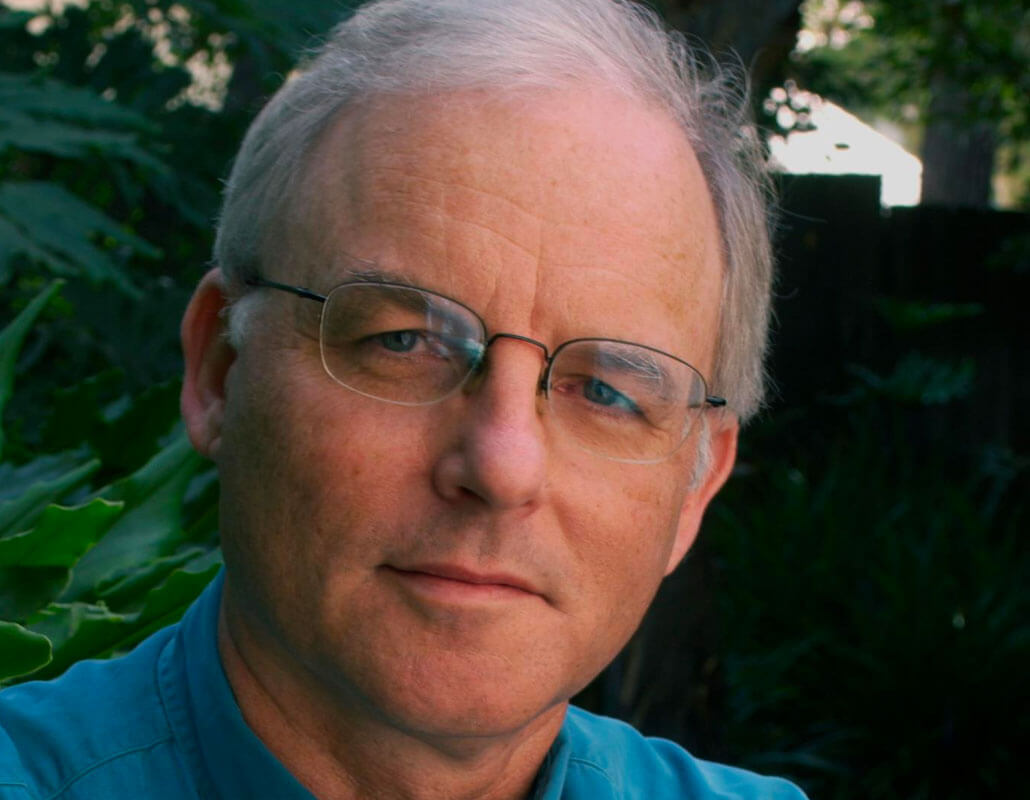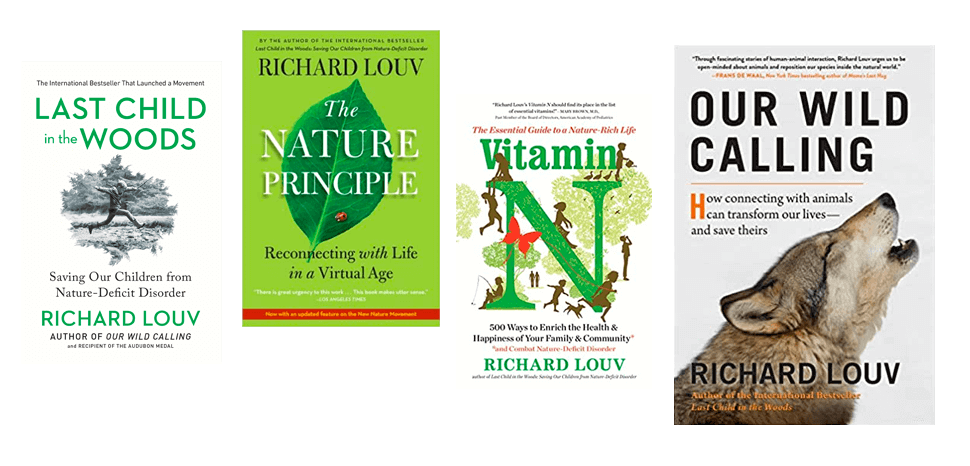The Giftedness
It takes a universe
to make a child both
in outer form and inner
spirit. It takes
a universe to educate
a child. A universe
to fulfill a child.
– Thomas Berry
Carolyn Toben steered through the mist and down a country road, across a partially washed-out wooden bridge and stopped next to an old building, tucked up in the trees, apparently abandoned.” That was once occupied by one of the finest minds and spirits of the 20th and 21st centuries,” Carolyn said.
The building, the Thomas Berry Hermitage, now lies in the path of a proposed loop road around the city of Greensboro, North Carolina, where Thomas grew up and had a transcendent childhood experience that served as a touchstone for his future life and work. “It was an early afternoon in May when I first looked down over the scene and saw the meadow,” he wrote later. “A magic moment, this experience gave to my life something, I know not what, that seems to explain my life at a more profound level than almost any other experience I can remember…”
That moment never ended. For the better part of a century, Thomas Berry has argued, eloquently and elegantly, that our environmental problems are primarily issues of the spirit. A few years ago, Newsweek magazine called Berry the “most provocative figure among the new breed of eco-theologians,” and the United Nations has honored him as a leading voice for the earth. He founded the History of Religions Program at Fordham University, and the Riverdale Center of Religious Research. A Catholic priest of the Passionist order, he has always been a man of humble demeanor and intellectual steel.
He still lives in Greensboro, and to this day, people come from all over the world to visit with him, to nurture their own spirits. Theologians, environmentalists, teachers and philosophers make their pilgrimages here. And, now and then, a stray journalist comes to call.
When I first met Berry, in 2005, he was 91. Carolyn Toben, the founder of the non-profit Center for Education, Imagination and the Natural World, had invited him to an event focused on the connection between children and nature. Later, she took me to lunch with Berry. Minutes after we slid into his customary booth at the O. Henry Hotel restaurant, he began to talk about the future. He was clearly done with the 20th century, with its industrialized violence and ecological destruction. “Everything we discuss now should be about the 21st century,” he said softly.
His face — always beatific — lit up when he considered the possibilities ahead, and our evolving relationship with nature.
A few weeks earlier, Katrina had raked through New Orleans. I asked him if the hurricane and its humbling aftermath would have a more profound impact on the American psyche than the events of September 11, 2001. “Possibly, very possibly,” he said. “Our species once had two sources of inspiration and meaning: religion and the universe, the natural world. But we have turned away from nature.”
Berry articulated a view seldom witnessed in popular media; that we must move beyond the war between those worlds. In one corner is science, steeped in the “Darwinian principle of natural selection, which involves no psychic or conscious purpose, but is instead a struggle for earthly survival.” This view of reality “represents the universe as a random sequence of physical and biological interactions with no inherent meaning.” In the other corner is Western religious tradition, which, he said, has moved too far from an older creation mystique, and toward a redemption mystique, in which passage to the next world is paramount, and the natural world is of little concern. Most of the time, these two worlds — science and religion — communicate politely, but “the antagonisms are deeper than they appear.”
And yet, Berry wrote in “The Great Work,” we are entering an extraordinary time: “As we enter the 21st Century, we are experiencing a moment of grace. Such moments are privileged moments.” In Berry’s 21st century, we return to Earth.
Perhaps that vision will come to pass. You can see that possibility in a new movement of faith-oriented environmentalists, eager to move beyond the old divide between Bible-based interpretations of dominion and stewardship. (Of course we have dominion, they say; look what we’re doing to God’s creation. Why would we want to hurt God’s creation?) You can see it in the young people who now dedicate their lives to sustainable — no, make that generative — development. You can see it in the growing recognition that exposure to nature enhances health, improves cognitive functioning and nurtures the spirit — for adults and especially for children.
A few months ago, I visited Thomas once again, this time in his room at an assisted-living home. He was amused by the phrase, “assisted living.” He can no longer walk. He sat deep in his chair, wrapped in a blanket, and once again his face filled with joy when he considered the possibilities of this new century. He was most curious about what others were doing, but I asked him about his own future and his relationship with nature. “Yes, I feel the urgency every day of spending time. I go out into the natural world every day, no matter what the conditions are,” he said.
I asked him about the architecture and ritual of homes for the aging. “The whole routine of the year could be more localized, more naturalized in the architecture,” he said. “I suspect that will be done in future years. Particularly as we feel we can make our houses any way we want to, and begin to recognize that there are ways of doing things that require paying attention to a world that is beyond the human mind.”
Then he said, “In our later years, we feel a return. To be gifted with delight as a child, the giftedness should continue. The aging process is full of excitement that comes along with the pain of going through the changes. The giftedness continues.”
Now, I listened to soft rain tap the roof of Carolyn Toben’s car as we looked at the old house, grown weak in its joints and held in the trees. “Thomas’s last two books were written here. ‘The Great Work’ and ‘Evening Thoughts,'” she said. Carolyn and others had hoped to raise funds to move this building, one piece at a time, to the earth sanctuary where the Center is located. There, they hoped, it would become the official Thomas Berry Hermitage.
If they succeed, this old house will serve as a symbol of our return to Earth. It will welcome the young and the hopeful, its doorway open to the future.
______________
Update, June 5, 2009: Carolyn Tobyn reports that the effort to save the Hermitage will not take take place, due to the recession. “It’s been a very tough one for me as you might imagine,” she says, “although Thomas himself was most cheerful about it a couple of weeks ago when I told him about it: ‘You’ve done a fine job of recognizing your limitations”, said he!”
On June 1, 2009, Thomas Berry, whose philosophy helped shape the way we perceive the human relationship with nature, died. He was a great supporter of our work, and served on the C&NN advisory board. Andrew Revkin, environmental reporter for the New York Times, wrote a wonderful obituary In addition, in his Dot Earth blog for the Times, Revkin wrote a wonderful entry about the Berry legacy.
I hope you’ll read the story and blog. I believe Thomas Berry is going to be remembered in history as one of the great thinkers. And I have a strong feeling that he has not left.
-
Network News
POLICY UPDATE: Policy and advocacy for the children and nature movement
-
Voices
Binoculars, bald eagles and my journey as a Black birder
-
Richard Louv
THE WONDER BOWL: Ten Spring and Summer Nature Activities for Kids and Adults
-
Network News
Minneapolis Spotlight: The promise and possibilities of parks for youth
-
Voices
Why nature is my motherhood ally




Commentaries on the C&NN website are offered to share diverse points-of-view from the global children and nature movement and to encourage new thinking and debate. The views and opinions expressed are those of the author(s) and do not necessarily reflect the position of C&NN. C&NN does not officially endorse every statement, report or product mentioned.